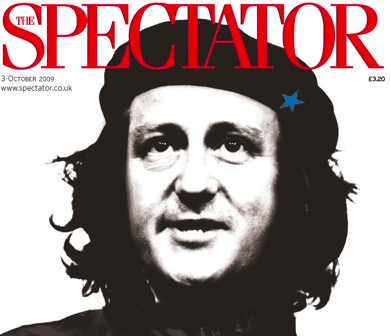‘Britain and Twitter are not the same thing’ said David Cameron this week – eight words that summed up the difference between the two parties. One has disappeared down a rabbit hole of social media, convinced that Britain is becoming more unequal and that the poorest have been suffering the most. The other, the Tories, are hard at work making Britain not just more prosperous but fairer too. If David Cameron actually follows up on his conference speech (he has a habit of not doing so) then a great prize awaits him: he could be Britain’s most socially progressive Prime Minister. I look at this in my Daily Telegraph column today.
1. Under Cameron, the poorest have done best and the richest worst. The precise opposite of what the PM’s critics claim has happened. Reading the Guardian you’d think that this is a government that wants prosperity, but in a way that only helps the richest 1 per cent while wealth trickles down to the top. (The FT‘s City Editor made this contention on Wednesday). The reality? The poorest did best, and the richest worst – you need to go back to Harold Wilson to find the last time that happened over a parliament.
Now, I’m not wild about the above graph: most of the country become poorer. It’s nothing to be proud off. I also think it’s a bad way to judge fairness: wages have been squeezed in the last five years (especially wages at the very top, not that you’d know that from all the hype about the 1 per cent) so those whose income depends on wages have done worst. If wages recover, as we all hope, the graph will reverse. But to listen to the inequality protesters, you’d think that the Cameron austerity era had so far been a hammer blow to the poor and a fillip to the rich. The reverse has been true.
2. Tuition fees have released funds to lure the poorest to university. This is proving to be another great progressive reform: of the £9k fees, about £3k is syphoned off to encourage bright students from the most deprived neighbourhoods to enter university. In England, anyway: this system has been rejected by the devolved parliaments in Scotland and Wales. Cameron’s progressive reform now means that, yes, wealthier students have to pay more of the cost of their education – but the support for the poorest means that England is now the best part of the UK to be poor and bright.
3. State schools now outshine private schools. The below chart shows the A-Level points average of students from the state and private schools, by rank. So ‘100’ shows the 100th best state school, vs the 100th best private school: as the graph shows they’re about the same (state edges it). Without an attainment gap, why pay for private? In fact, the number of private schools is now in decline, and has been for the last three years – a trend that is looks set to continue.
4. Inequality fell under Cameron, and hasn’t changed for 25 years. At the Labour Party conference, there was a lovely book shop that had titles arranged in topics that the lefties like. The ‘inequality’ section groaned with the weight of tomes by Danny Dorling, Thomas Piketty and Tony Atkinson – giving the impression of a growing problem. In fact, in the UK, inequality is falling – and stands at pretty much where it was since Vanilla Ice was no1.
5. The 1pc shoulder a greater share of the tax than ever Because David Cameron cut the top rate from 50 per cent to 45 per cent, creating an incentive for them to work harder, earn more – and hand more over to the taxman. The more Cameron gets from the rich, the less he has to charge the poor. Progressive taxation in action.
6. And Cameron created jobs faster than any modern Prime Minister. And was we all know, work is the surest route out of poverty.
Now, there are a whole bunch of things wrong with Cameron’s government; it has failed to meet its debt targets, immigration is now weakening the link between jobs growth and dole queues – and much, much more. But the most popular critique, that the poorest are the victims of Toryism, just isn’t supported by the evidence.













Comments